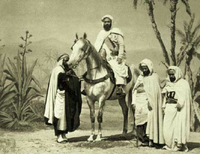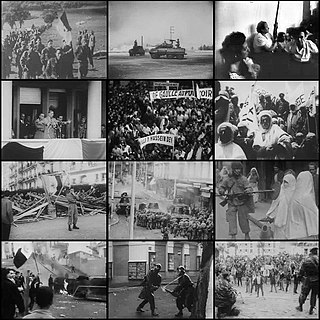
The Algerian War was a major armed conflict between France and the Algerian National Liberation Front (FLN) from 1954 to 1962, which led to Algeria winning its independence from France. An important decolonization war, it was a complex conflict characterized by guerrilla warfare and war crimes. The conflict also became a civil war between the different communities and within the communities. The war took place mainly on the territory of Algeria, with repercussions in metropolitan France.
The Special Organisation was a secret paramilitary organisation in colonial Algeria, founded by Mohamed Belouizdad of the Movement for the Triumph of Democratic Liberties (MTLD) in 1947 to prepare for armed struggle against France, which ruled Algeria as a colony since 1830. The turn towards guerrilla warfare was in large part the result of the reactions to the fraudulent elections to the Algerian Assembly in 1948 and later, decided and justified by the Governor-General of Algeria Marcel-Edmond Naegelen, and reactions to the Sétif massacre in 1945, and other examples of violent repression, which all convinced Algerian activists from 1948 onwards that peaceful political work would be pointless.
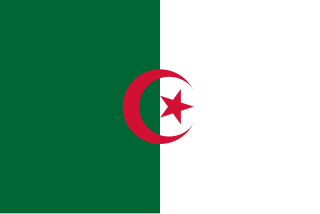
The Provisional Government of the Algerian Republic was the government-in-exile of the Algerian National Liberation Front (FLN) during the latter part of the Algerian War of Independence (1954–1962).

Elements from the French Armed Forces used deliberate torture during the Algerian War (1954–1962), creating an ongoing public controversy. Pierre Vidal-Naquet, a renowned French historian, estimated that there were "hundreds of thousands of instances of torture" by the French military in Algeria.
The Battle of Philippeville, also known as the Philippeville massacre or the August Offensive was a series of raids launched on 20 August 1955 on various cities and towns of the Constantine region by FLN insurgents and armed mobs during the Algerian War between France and Algerian rebels. The raids, which mostly took the form of ethnic riots, resulted in the massacre of several dozens of European settlers known as Pieds-Noirs. These massacres were then followed by reprisals by the French army and Pieds-Noirs vigilantes, which resulted in the death of several thousand Muslim Algerians. The events of late August 1955 in the Constantinois region are considered to be a major turning point of the Algerian War.

Si-Mustapha is a town and commune in the Isser District of Boumerdès Province, Algeria. At the time of the 1998 census it had a population of 9,015.
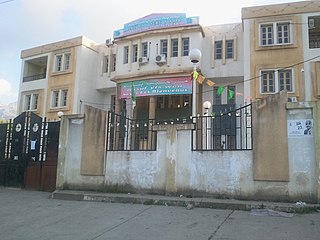
Tizi N'Tleta is a town and commune in Tizi Ouzou Province in Kabylie.
Revolutionary Committee for Unity and Action was a militant group in Algeria formed in order to fight French rule. CRUA regrouped former elements of the OS and radical members of the MTLD. The CRUA was founded by 33 persons.
The First Battle of El Djorf took place on 22 September 1955, during the Algerian War, between the National Liberation Army and the French Army.

Djelloul Khatib alias commandant Djelloul was a combatant for the Algerian independence and a public servant. During the war of independence he led the efforts towards the professionalization of the National Liberation Army (NLA). He contributed thereafter to building the civil service of newly independent Algeria.
The Battle of Bouzegza took place during the Algerian War in the Berber-speaking region of the Adrar Azegzaw massif, at the far eastern end of the Mitidja Plain.

The Ambush of Palestro, or Ambush of Djerrah, took place on the 18th May 1956, during the Algerian war, near the village of Djerrah in the region of Palestro in Kabylie. A section of about forty men from the National Liberation Army (ALN) under the command of Lieutenant Ali Khodja ambushed a unit of 21 men from the 9th Colonial Infantry Regiment of the French Army commanded by Second Lieutenant Hervé Artur.
Baya Jurquet was an antiracist and anti-colonial activist and feminist. She worked for the emancipation of women in Algeria. She advocated for the defence and promotion of the right to self-determination and against colonialism in Algeria.
Brahim Boushaki, was an Algerian Scholar, Imam and Sufi Sheikh. He was born in the village of Soumâa near the town of Thénia 53 km east of Algiers. He was raised in a very spiritual environment within Zawiyet Sidi Boushaki with high Islamic values and ethics. He had great interpersonal skills and devoted his entire life in service of Islam and Algeria according to the Algerian Islamic reference.
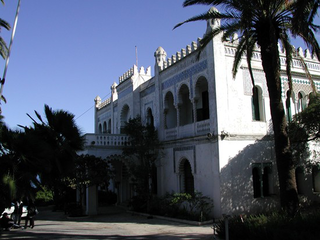
The villa Sésini is a torture center established in El Biar during the Algerian war in the city of Algiers.
Mohamed Aïchaoui was an Algerian journalist and militant in the nationalist movement against French Algeria. Aïchaoui wrote the Declaration of 1 November 1954, the National Liberation Front's first appeal to the Algerian people at the start of the Algerian War. After earlier imprisonment and torture, he died in a 1959 clash with the French army.
Ahmed Mahsas was an Algerian militant in the nationalist movement against French Algeria.
Hocine Mezali is an Algerian journalist and writer. He had been the head of intelligence during the Battle of Algiers (1956–1957).
Yahia Boushaki, commonly known as Si Omar or simply as Boushaki, was a prominent revolutionary leader during the Algerian war of independence as a member of the Front de Libération Nationale that launched an armed revolt throughout Algeria and issued a proclamation calling for a sovereign Algerian state.









